The Irrigation System
Why do we irrigate? Well, irrigation systems automate the watering process. That means users can sit back and relax without having to worry about hand watering every week. It also allows for more precise watering, since systems can be programmed to deliver a set amount of water to different zones.
Keeping your system well-maintained and operating at its best can save a substantial amount of water each year. Since irrigation is typically where most water is used in a home, it is imperative to make sure that water gets used instead of wasted through a faulty system.
When things do go amiss, it can be very helpful to know how your system works. It makes communication with irrigation professionals and repairs that much easier. Read on to learn about the core components of an irrigation system.
Controller
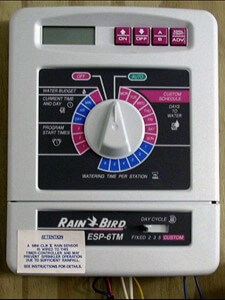
The controller is the brain of the whole system. The controller tells when to water, how long to water, and in what zones. Controllers can be standard or “smart.” Standard controllers must be programmed by an individual, but smart controllers operate based on local weather information or soil conditions. Those who want to operate a smart irrigation system must seek a variance to the Sarasota County ordinance that stipulates year-round water restrictions. As a result, this blog will focus on the standard irrigation controller.
The controller is in charge of your whole system. It tells it when to water, how much to water, and in what zones. Controllers can be standard or “smart.” Standard controllers have to be programmed by an individual, but smart controllers operate based on local weather information or soil conditions. With standard irrigation controllers, users should calibrate each zone to find out how many minutes it takes to deliver 1/2″ to 3/4″ of water, the recommended amount for Florida soils, in order to efficiently operate their irrigation system.
Sarasota County year-round water restrictions are designed to conserve our finite water resources. Thus, it is important to make sure that you set your irrigation clock to your designated watering day. For residents of unincorporated Sarasota County, follow the watering restrictions below:
- If your address ends in an even number (0, 2, 4, 6, 8, 10), water on Tuesday.
- If your address ends in an odd number (1, 3, 5, 7, 9), water on Thursday.
You can check out the watering restrictions for the rest of the county here. Additional water-saving protections are required under the state law. The state law requires that all standard controllers are hooked up to a rain sensor.
Water Source
Potable, well, reclaimed – are all water types that you might be using to irrigate your landscape. Many residences in Sarasota County rely on potable water delivered by a central line from public utilities for both their indoor and outdoor needs. Potable water is drawn from nearby freshwater resources and can be quite expensive to use for irrigating large properties. So, to protect these important resources, it is best to irrigate with lower quality water when available. Given the predicted deficit of our future freshwater supply, it is crucial to irrigate responsibly.
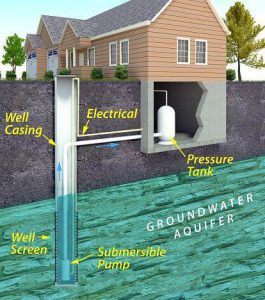
Well water can also be fresh, potable water. Wells tap into one of the underground aquifers and pump groundwater into the home or through the irrigation system. Water quality from the aquifer will depend on the depth of the well. The deeper the aquifer, the longer it takes to recharge. Water moves slowly underground at a rate of about 1 foot per week. An underground aquifer will gain only about 3/4 of an inch to 15 inches per year. Therefore, it can take several hundred to thousands of years to fully recharge the aquifer. Withdrawing too much water before the aquifer can replenish its freshwater lens can create saltwater intrusion, leading to lower water quality.
The best choice for irrigation in a world with limited freshwater is reclaimed water. Reclaimed water is most often delivered to ponds, where it is stored until use. In some buildings and operations, reclaimed water can be used by directly connecting to a water reclamation facility’s existing pipes. Reclaimed water does not cut into our freshwater supply and gives users a chance to recycle an important, limited resource.
Backflow Prevention Device
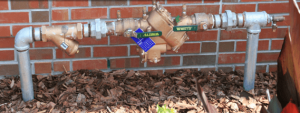
Not all systems have one, but it is legally required for homes with more than one water source. This means that if you have both potable water and either reclaimed or well water, you should have one installed. The device, which can be found in several forms, performs the function of keeping your water sources separate. Keeping your sources separate prevents the contamination of your community’s potable water supply. Sarasota County requires residents to test their backflow systems every two to ten years in its Cross-Connection Control Program.
Pipes & Valves
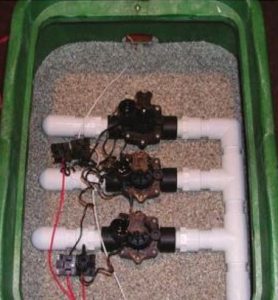
Your water flows from your irrigation water source through a series of pipes. These pipes can be short, long, wide, or narrow and come in a variety of materials. Most irrigation systems in Florida use white polyvinyl chloride (PVC) pipe, as it is durable and maintains its structure in sandy soils. Pipes are often one of the irrigation system components that needs the most maintenance or repairs. If they are small in size, PVC cracks can often be repaired by painting on a few layers of solvent cement and allowing the pipe to dry.
Water traveling through your pipes is controlled by valves. Valves can shut the opening of the pipes, preventing the system from irrigating. When the valve attached to a pipe is open, it allows your water to flow through the pipes and to your sprinklers or micro-irrigation system.
Distribution Device(s)
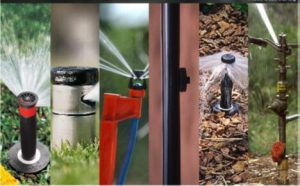
Our last component to discuss is the system’s distribution device. Simply put, the device helps get water from the pipes to the landscape that is being irrigated. Sprinklers are usually used to water turfgrass, and landscape beds are more likely to have micro-irrigation emitters. It is important to use the right devices in the right irrigation zones or water might be wasted. For a list of what emitters to use where, check out this handy guide from the Florida-Friendly Landscaping™ Program.
Free Online Course
Interested in learning more about irrigation? Check out our new, self-paced online course to get more information on irrigation system components, rain sensors, when to water, and much more.
Register today at: https://bit.ly/irrigationbasics.
An Equal Opportunity Institution. UF/IFAS Extension, University of Florida, Institute of Food and Agricultural Sciences, Nick T. Place, dean for UF/IFAS Extension. Sarasota County prohibits discrimination in all services, programs or activities. View the complete policy at www.scgov.net/ADA.
 0
0
